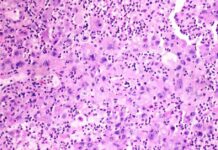As summer comes to a close, the threat of mosquito-borne illnesses continues to loom large across the United States. Jennifer White, a New York state epidemiologist, warns that despite the arrival of pumpkin spice season, it is not the end of mosquito season. August and September are peak months for mosquito-borne illnesses in the U.S. as populations of these insects have had ample time to grow and transmit viruses throughout the summer months.
The Three Common Diseases Spread by Mosquitoes
Dengue fever, eastern equine encephalitis (EEE), and West Nile virus are the three most common diseases spread locally by mosquitoes within the U.S. Cases of these illnesses are still being reported in many states, emphasizing the need for continued vigilance. In California, health officials recently issued a warning about three locally acquired dengue cases in Los Angeles County, marking an unprecedented cluster of cases in an area where dengue had not previously been transmitted by mosquitoes.
This year has seen a concerning number of cases of dengue, EEE, and West Nile virus in the U.S. Last month, New Hampshire reported its first case and death from EEE since 2014, while Vermont reported its first case since 2012. Even high-profile individuals like Dr. Anthony Fauci have been impacted by West Nile virus, underscoring the widespread reach of these mosquito-borne illnesses.
Climate Change and Mosquito Season
The impact of climate change on mosquito-borne illnesses cannot be overlooked. Rising global temperatures are leading to longer summers and shorter winters, creating more opportunities for mosquitoes to breed and transmit diseases. Chantal Vogels, an assistant professor of epidemiology at the Yale School of Public Health, highlights how climate change is extending the mosquito season, posing a significant challenge in disease prevention efforts.
The Expanding Threat of Dengue Fever
Dengue fever poses a growing threat, with cases on the rise both nationally and globally. The virus, transmitted primarily by female Aedes aegypti mosquitoes, has been detected in several states, including Arizona, California, Florida, Hawaii, and Texas, as well as Puerto Rico and the U.S. Virgin Islands. While many cases in the U.S. are travel-related, recent instances of locally acquired dengue in Los Angeles demonstrate the potential for mosquito-borne diseases to spread within communities.
Nirbhay Kumar, a global health professor, emphasizes that asymptomatic cases of dengue can still contribute to transmission, highlighting the need for heightened awareness and preventative measures. Globally, dengue cases have surged in recent years, underscoring the urgent need for effective strategies to combat the spread of this debilitating disease.
The Normalcy of West Nile Virus
Despite the attention on dengue, West Nile virus remains a prevalent concern in the U.S. While most cases are asymptomatic, some individuals experience fever, rash, aches, and gastrointestinal symptoms. Reporting of West Nile cases tends to lag, but this year’s count is expected to be consistent with previous years, with hundreds of cases typically reported annually.
Certain regions, like Clark County, Nevada, have seen a notable increase in West Nile cases, signaling the importance of proactive mosquito control measures. Dr. Thomas Jaenisch, an infectious disease epidemiologist, predicts a gradual northward spread of both West Nile and dengue across the country as climate change continues to impact mosquito populations.
The Severity of Eastern Equine Encephalitis
Eastern equine encephalitis (EEE) is a rare but deadly disease that poses significant risks to those infected. With a mortality rate of around 30% among severe cases, EEE can result in long-term neurological complications for survivors. While EEE cases are relatively uncommon, the disease remains a serious threat in Eastern and Gulf Coast states, necessitating heightened surveillance and prevention efforts.
Preventative Measures and Recommendations
In the absence of specific treatments for mosquito-borne illnesses, preventive measures are crucial in reducing the risk of transmission. Health experts recommend using insect repellent containing DEET, picaridin, IR3535, or oil of lemon eucalyptus to ward off mosquitoes. Additionally, eliminating stagnant water sources on residential properties can help curb mosquito breeding and reduce the likelihood of disease transmission.
As mosquito season extends into the fall months, it is essential for individuals to remain vigilant and proactive in protecting themselves against mosquito-borne illnesses. With the ongoing threat posed by diseases like dengue, EEE, and West Nile virus, prioritizing mosquito control measures and following recommended preventive strategies can help mitigate the risk of infection and ensure public health and safety.

















